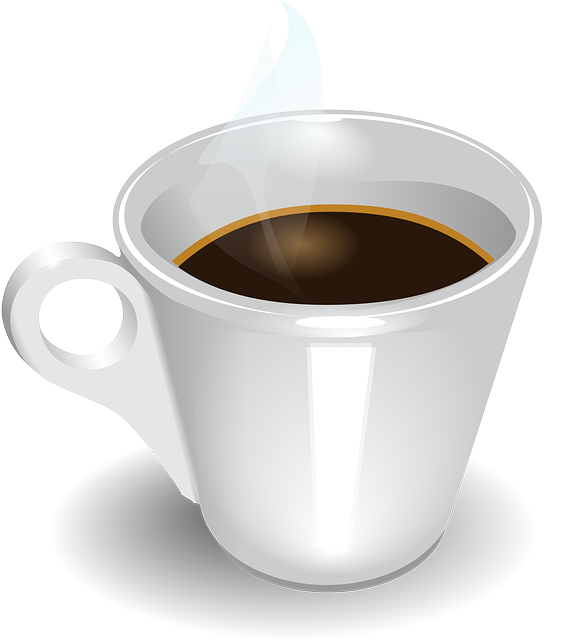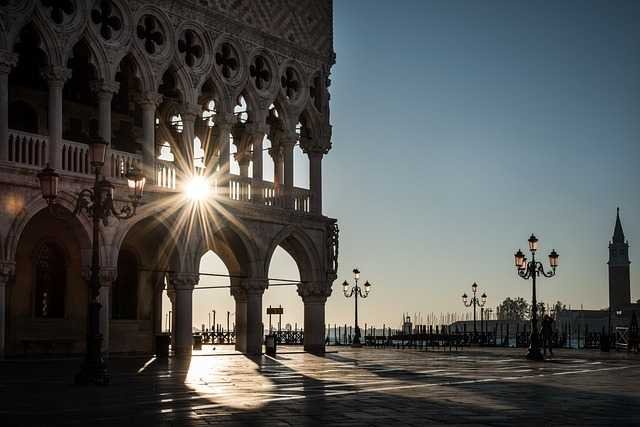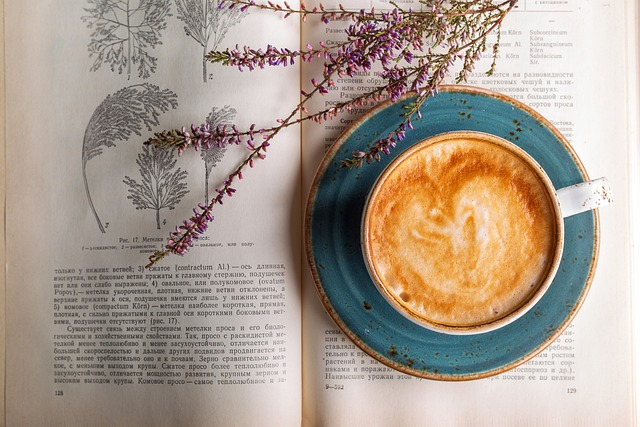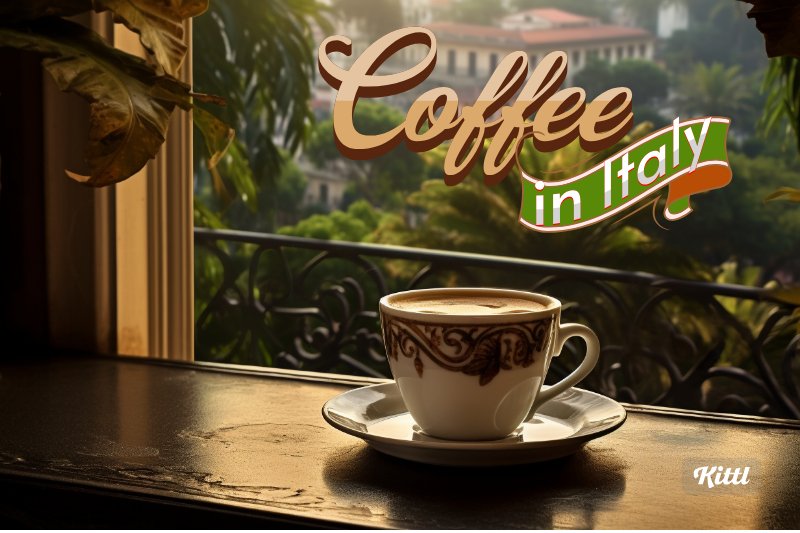
Espresso Yourself: A Joyful Journey into Italy’s Coffee Culture! ☕🇮🇹
Alright, java junkies, ever wondered where the ultimate coffee hotspot is? Drum roll, please… It’s Italy! 🇮🇹 Now, I know what you’re thinking: “Isn’t Italy famous for pizza and gelato?” True, but their coffee game? It’s on a whole other level.
Why is Italy so brewed up over coffee, you ask? Coffee in Italy isn’t just a drink; it’s a way of life, a morning ritual. Sometimes the perfect excuse to take a break from your annoying coworker. 😜
Ever strolled into an Italian coffee shop? It’s like stepping onto the set of a lively game show. Ding, ding, ding! And the prize? A cup of heavenly espresso.
And let’s talk about those delectable coffee drinks. What’s your go-to? A frothy cappuccino? Or perhaps a rich, robust ristretto? Fun fact: ordering a coffee after 11 am might get you some funny looks. It’s like wearing socks with sandals – a fashion faux pas!
“In Italy, coffee isn’t just a drink; it’s a timeless embrace of culture, a daily ritual that turns every sip into a moment of pure Italian magic.”

Alright, time to brew up some serious talk about Italian coffee rituals!

Italian Coffee Culture: A Way of Life
Italian coffee culture is a blend of art, history, and social interaction.’s about savoring the moment, engaging in conversation, and, of course, enjoying exceptional coffee. Whether you’re in bustling Milan or a charming Tuscan village, coffee is an integral part of daily life.

Italian Coffee Bars: Social Hubs
Italian thrives in coffee bars, where locals gather to chat, read newspapers, and enjoy a quick espresso. These bars are the heartbeat of the community.
Step into an Italian coffee bar, and you’ll enter the heart of the community. These bustling establishments are more than places to grab a coffee; they’re social hubs where neighbors greet each other, catch up on the latest news, and share a moment of camaraderie. It’s a true slice of Italian coffee life.

Italian Coffee in Practice
Italy has always started their day with coffee and pastry in the local bar that most people call the cafe. Coffee can usually take place at the bar from the top, mainly because it consists of often a small cup of double espresso taking less than a second to drink. In most bar / dining room / hotel restaurants, your coffee will be twice as expensive as gratuity if you drink it at a restaurant table. Coffee at the bar is typically between € 1.50 and €2 while more upscale spots may have upwards of €3.

Ordering Coffee: A Unique Etiquette
In Italy, there’s a specific etiquette for ordering coffee. Italians don’t take their coffee “to go” – they savor it at the bar. When ordering, use the right terminology, and don’t forget to say “grazie” (thank you).
Ordering coffee in Italy is an art in itself. Forget the “to-go” cups and leisurely sips on the run. Italians prefer to savor their coffee at the bar, standing up, and engaging with the barista and fellow customers. Use the correct terminology, such as “un caffè” for a regular espresso or “un cappuccino” for the creamy morning delight. And always remember to say “grazie” with a smile – it’s a sign of appreciation for the coffee and the culture.
Italian Coffee Types: A Plethora of Options
Italy offers a plethora of coffee choices, from the strong and intense to the mild and creamy. Each region may have its specialty, so exploring local coffee variations is a delightful journey.
Italy’s diverse coffee landscape is a reflection of its rich culture and regional diversity. From the bold shots of espresso in the south to the creamy cappuccinos in the north, there’s a coffee to suit every palate. Local specialties, influenced by tradition and local ingredients, offer a unique taste of each region’s character.

What is an Italian coffee called?
It’s called “caffè” in Italy, which means coffee, but also for ordering a cup of espresso, the most widely accepted type and the easiest way to be more of a non-stranier. When you enter the store, say “Caffè”.
Coffee Blends: A Fusion of Flavors
Italy is famous for its coffee blends, which are carefully crafted to create unique flavors. The blending process is an art in itself, resulting in the perfect cup.
Behind every great Italian coffee blend is a master blender with an intricate knowledge of beans, roasting profiles, and flavor profiles. They carefully select and combine different coffee varieties to create a harmonious and complex flavor profile. The result is a coffee that tantalizes the taste buds and leaves a lasting impression.
International Coffee Chains: A Blend of Traditions
While Italy takes pride in its traditional coffee culture, international coffee chains have also found a place in Italian cities. They offer familiar favorites, but the local coffee bars remain beloved.
In recent years, coffee chains have made their way to Italian cities, offering a taste of global coffee culture. While they bring familiarity to travelers, locals still cherish their traditional coffee bars. The Italian and coffee drink culture remains strong, with each sip serving as a reminder of centuries of tradition.

The Coffee’s Aroma: An Alluring Experience
The aroma of freshly brewed whole coffee beans is irresistible. Italians appreciate this sensory pleasure and often pause to inhale the rich, inviting scent.
In Italy, the appreciation of coffee goes beyond taste; it’s a multisensory experience. The moment a fresh shot of espresso is poured from espresso machine, the air is filled with a tantalizing aroma that beckons all nearby. Italians often pause to savor this sensory pleasure before taking their first sip, immersing themselves fully in the coffee experience.

A Caffeine Boost: Beyond the Taste
Coffee isn’t just about taste; it’s also about the caffeine kick. Italians rely on coffee to energize their day and keep them alert.
In a country where the pace of life can be brisk, coffee serves as more than a beverage; it’s a vital source of energy. The caffeine in coffee provides a much-needed boost, helping Italians stay alert and focused throughout the day. for Italian coffee drinks it’s not just a drink; it’s a trusted companion in the journey of life. Drink coffee!

Whipped Cream and Nutty Flavors: Unique Twists
Some coffee variations, like caffè con panna, are topped with whipped cream for an indulgent treat. Others may feature nutty flavors or other creative additions, adding a delightful twist to your cup.
While tradition is at the heart of Italian coffee culture, there’s also room for innovation and creativity. Some coffee variations, like caffè con panna, are topped with a generous dollop of whipped cream, creating a rich and indulgent treat. Others may feature hints of hazelnut or other nutty flavors, adding depth and complexity to the coffee experience.

22 Most popular coffee types in Italy:
-
Espresso: The heart and soul of Italian coffee culture, a shot of espresso is a concentrated burst of flavor.
-
Cappuccino: Espresso combined with steamed milk and topped with milk foam, typically enjoyed in the morning.
-
Caffè Macchiato: Espresso “stained” with a small amount of frothy milk, offering a balance of flavors.
-
Caffè Lungo: Espresso with a little more water, providing a milder taste for those who prefer it less intense.
-
Caffè Americano: Espresso diluted with hot water, similar to American-style coffee.
-
Caffè Corretto: Espresso “corrected” with a splash of grappa, brandy, or another spirit for added warmth and flavor.
-
Caffè Latte: Espresso with a generous amount of steamed milk, creating a creamy and comforting experience.
-
Cappuccino Freddo: An iced version of the classic cappuccino, perfect for warm afternoons.
-
Caffè Shakerato: A chilled coffee made by shaking espresso, ice, and sugar until frothy and cold.
-
Caffè Marocchino: Espresso, cocoa powder, and a touch of milk foam, often enjoyed as a dessert coffee.
-
Caffè Mocha: Espresso combined with hot chocolate, topped with whipped cream.
-
Latte Macchiato: Steamed milk “stained” with a shot of espresso, creating a layered effect.
-
Caffè Doppio: A double shot of espresso for those who crave an extra-strong kick.
-
Cappuccino con Panna: Cappuccino with a dollop of whipped cream for an indulgent treat.
-
Bicerin: A specialty from Turin, it combines espresso, hot chocolate, and cream in layers.
-
Ristretto: An even shorter and more concentrated espresso shot than the traditional espresso.
-
Granita di Caffè: A semi-frozen coffee treat, often enjoyed in the summer.
-
Caffè al Ginseng: Espresso flavored with ginseng root extract, offering a unique twist.
-
Caffè alla Nocciola: Espresso with a hint of hazelnut flavor, popular in some regions.
-
Caffè alla Vaniglia: Espresso infused with vanilla flavor, adding a sweet dimension to your cup.
-
Caffè alla Liquirizia: Espresso with a touch of licorice syrup for a distinctive taste.
-
Caffè al Cocco: Espresso with a hint of coconut flavor, a tropical twist on the traditional.

5 top coffee bars in Italy
Finding the best coffee bars in Italy can be a delightful adventure, as there are numerous exceptional ones throughout the country. Here’s a list of five renowned coffee bars in different cities that are worth experiencing:

-
Caffè Florian – Venice: Established in 1720, Caffè Florian is one of the oldest coffee houses in the world. Located in the heart of Venice’s iconic Piazza San Marco, it’s a place where history, art, and coffee converge. Sip your coffee while enjoying live music and the view of the stunning square.
-
Caffè Sant’Eustachio – Rome: Nestled in the heart of Rome, Caffè Sant’Eustachio is celebrated for its exceptional espresso. The secret to their coffee’s rich flavor is their unique blend and the water drawn from a Roman aqueduct. Don’t forget to pair your coffee with their famous granita di caffè, a delightful coffee slushy.
-
Caffè Gambrinus – Naples: Located in the vibrant city of Naples, Caffè Gambrinus is an iconic coffee destination. It’s been frequented by famous writers, artists, and intellectuals over the years. Their coffee and pastries are legendary, and the historic ambiance adds to the experience.
-
Caffè Greco – Rome: A stone’s throw from the Spanish Steps in Rome, Caffè Greco is a historic coffeehouse dating back to 1760. It has welcomed luminaries like Goethe, Byron, and Keats. Step inside, and you’ll be transported to a bygone era, where the coffee is as exquisite as the history.
-
Caffè Pedrocchi – Padua: Situated in the charming city of Padua, Caffè Pedrocchi is a cultural landmark. Its distinctive architecture and lavish interiors make it a must-visit. Try their famous “Pedrocchi coffee,” a layered concoction of coffee, chocolate, and mint-flavored cream.
Sips and Stories: Marco’s Italian Coffee Journey!

A delightful chat on Italy’s passionate love affair with coffee and the traditions that keep it alive.
Julia: “Buongiorno, Marco! First off, thanks a latte for joining us today. Get it? Latte?”
Marco (laughs): “Buongiorno! And nice one, though for us Italians, it might be more of a ‘thanks a macchiato’!”
Julia: “True, true! So tell us, why do Italians take their coffee so seriously? Is it in the DNA or something?”
Marco: “Ah, you might think so! But really, it’s all about history and ritual. Coffee first came to Europe via Italy in the 16th century. We’ve had a lot of time to perfect it! From our grandmas to the baristas in Milan, it’s become a part of our daily ritual.”
Julia: “That’s centuries of coffee love! But what about the mid-day espresso shots? It’s like a jolt of energy in a tiny cup!”
Marco: “Exactly! Espresso is to Italians what tea is to the British. It’s a pick-me-up, a conversation starter. Sometimes an excuse to take a five-minute break from life’s daily grind… pun intended.”
Julia: “Well played, Marco. So, with all this coffee talk, there must be some traditions or rules to follow, right?”
Marco: “Oh, absolutely! For starters, cappuccinos are for mornings only. If you order one after 11 am, you’re basically wearing a sign that says ‘I’m not local.’ And never, ever order a coffee during a meal. It’s strictly an after-meal affair.”
Julia: “Now, any final words for those looking to understand the heart of Italian coffee culture?”
Marco: “Come to Italy, find a local cafe, order an espresso. Sip it standing up at the bar, just like the locals. Feel the ambiance, the chatter, the clinking of cups. That’s Italian coffee culture in its essence. And remember, it’s more than just a drink, it’s an experience.”
Julia: “Well, Marco, you’ve given us some serious coffee goals! Grazie mille for this brew-tiful chat!”
Marco (laughs): “Anytime! And always remember, life’s too short for bad coffee. Ciao!”

Brewing Through Time: Italy’s Authentic Coffee Story!
The Beginnings: A “Bean-ginning”!
In Italy wasn’t always about espresso machines and frothy cappuccinos. In fact, when coffee first sailed into Italy in the 16th century, it was considered a “coffee substitute”. Yup, they’d mix anything from roots to barley as an alternative! But, as with most Italian masterpieces, it didn’t take long for them to turn this new beverage into an art.
The Perfect Brew: Getting it “Ground” Right!
Now, we all love a cup of great coffee, right? But Italians? They took that love to a whole new level. By the 19th century, Italy’s love affair with coffee was in full swing. And guess what? The espresso machine was born! But it wasn’t just about the machine; it was the “ground coffee” magic that made all the difference.
Transitioning Trends: Coffee Making Evolves!
Jump to the 20th century. The buzz was all about cafes and communal coffee making. The sound of coffee beans grinding became the morning jingle for many Italians. And while the rest of the world was sipping their diluted brews, Italians were proudly declaring, “Life’s too short for anything but correct coffee!”

FAQs: Brewing The Curious Beans!
-
Why do Italians swear by “correct coffee”?
It’s simple! They believe in the purity of coffee. No fillers, no sub-standard beans, just the rich, aromatic essence of ground coffee. -
Was there ever a “coffee substitute” used in Italy?
Oh, absolutely! Before coffee became mainstream, various substitutes like chicory were popular. But, let’s be honest, nothing can truly replace the allure of great coffee. -
What makes Italian coffee different from the rest?
The meticulous process! From choosing the beans, the grind, to the brewing method – it’s all about preserving the soul of the coffee.
In Conclusion: Sip, Savor, Repeat!
Whether you’re diving into the depth of a dark roast or just whisking up some foam for your latte, remember: the essence of great coffee is deeply rooted in history. And next time you’re sipping on that perfect cup of Italian coffee, give a nod to the centuries of evolution and passion that have gone into making it just right!
To coffee adventures and the stories they brew! ☕🎉

6 Buzz-worthy Facts About Italy’s Coffee Obsession!
-
Coffee is a Religion: Did you know that when Italians wake up, the first thing they think about isn’t soccer or pasta? Nope! The average Italian drink coffee first thing in the morning, making it a divine morning ritual!
-
What’s in a Name: Ever wondered where “caffé americano” came from? Word on the piazza is that during WWII, American soldiers found Italian coffee too strong. So, they diluted it with hot water, and voilà! The caffé americano was born. Talk about a happy accident!
-
Sugary Affairs: Italians traditionally love their espresso. But when they want to sweeten the deal? They add sugar! No artificial sweeteners for this crowd; they like to keep it sweet and simple.
-
Size Matters: In Italy, drinking coffee is all about the experience, not the quantity. If you order coffee, expect a petite, powerful punch of flavor in a small cup. No venti-sized cups here, folks!
-
Afternoon Faux Pas: If you order a cappuccino in Italy after 11 am, be ready for some raised eyebrows. It’s a morning drink! In the afternoon, Italians switch gears and go for espressos or other short coffees. Ordering a late-day cappuccino is like wearing socks with sandals at the beach!
-
Not Just Any Bean: Italians are picky about their beans, and rightly so! The beans have to be just the right blend, roasted to perfection, and ground moments before brewing. Now that’s commitment to drinking coffee with style and substance!
-

Summary: How Italians Drink Their Coffee
Coffee in Italy: Beyond Just a Beverage
Italy is not just renowned for pizza and gelato, but also for its deeply embedded coffee culture. Italian coffee isn’t just a drink; it’s a way of life and a daily ritual. For Italians, strolling into a coffee shop is a lively experience, and ordering coffee after 11 am might be frowned upon as a cultural faux pas. Italian coffee culture is about savoring the moment, engaging in conversation, and relishing exceptional coffee.
An Integral Part of Social Life
Coffee bars in Italy are community hubs, serving as places where locals catch up on news, engage in lively chats, and enjoy their espresso. The ritual of having coffee is so ingrained that there’s even a unique etiquette for ordering – it’s typically consumed standing at the bar, savoring every sip, and never taken “to-go”.
Diverse Flavors Across Regions
From the strong espresso to the creamy cappuccino, the types of coffee in Italy vary widely based on regions and local preferences. Other variations include the addition of whipped cream or flavors like hazelnut and coconut.
Coffee Choices in Italy
There are 22 popular coffee types, including classics like Espresso and Cappuccino, to the more unique ones like Caffè al Ginseng and Caffè alla Liquirizia.
The Blend of Tradition and Modernity
While Italy cherishes its traditional coffee bars, international coffee chains have also found their place in cities. However, the love for local coffee bars remains untouched, and they stand as symbols of centuries-old tradition.
A Glimpse into Italian Coffee Bars
Among the notable coffee bars are Caffè Florian in Venice, Caffè Sant’Eustachio in Rome, and Caffè Gambrinus in Naples. Each has its own rich history and offers a distinctive coffee experience.
The Historical Journey of Coffee
Coffee’s introduction to Italy in the 16th century wasn’t all about modern espresso machines. The country has seen the evolution of coffee from its introduction to the present day.
In essence, coffee in Italy is a blend of history, culture, and personal experiences, making every sip a celebration of Italian tradition.




